Last week I received a notification that the new floorboards for my Omega 42 sailboat are finished. What a nice occasion! So, instead of having them shipped I decided to collect them right there at the production site to learn more about how a professional flooring is made and applied. After this, I brought them to the shipyard where the boat is being build right away just to check how they fit and most important, how it looks like. You know it: Color choices are among the most important when it comes to boat comfort.
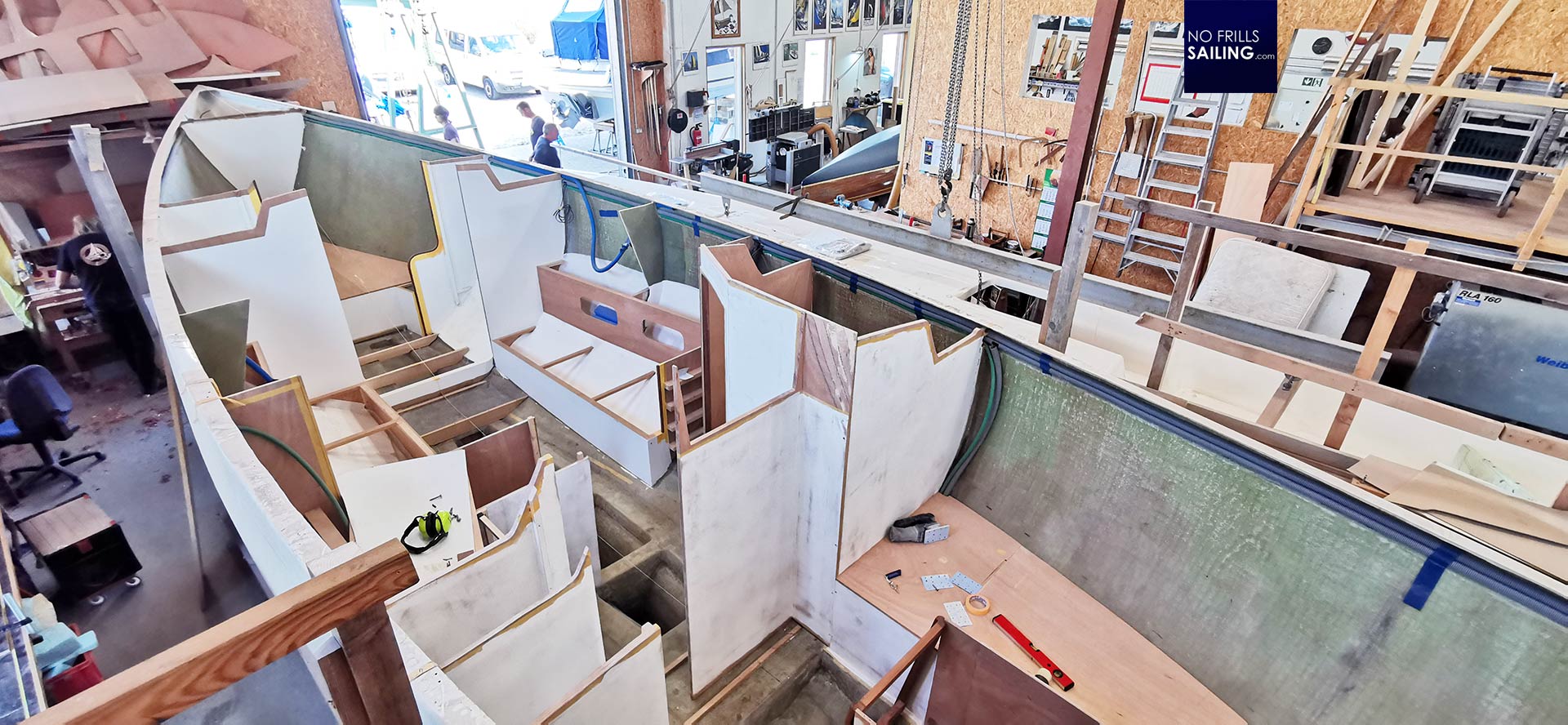
Arriving at the shipyard the guys have worked a little bit more since my last visit two weeks before. Most importantly, the deck had been taken off again and put besides the hull. This is now my chance to start the process of taking the measurements of those parts of the deck which I want to have been applicated with artificial Teak. You may read this article about this particular process, which is absolutely interesting. Anyway, back to the floorboards …
The challenge of making floorboards
The Omega 42 is a complete newbuild. Everything is 100 per cent handcrafted, so are the floorboards. Since there are no construction drawings or original plans of the Omega 42 from Peter Norlin available anymore, Heiner Francke, boss of Mueritz Bootsservice, had to reverse-engineer the whole boat from scratch. This means that the floorboards – having bent and rounded shapes – are pieces of meticulous handcrafted joinery, cut and sanded down to fit perfectly in many, many steps. In this, of course, there is a certain margin of error and inaccuracies.
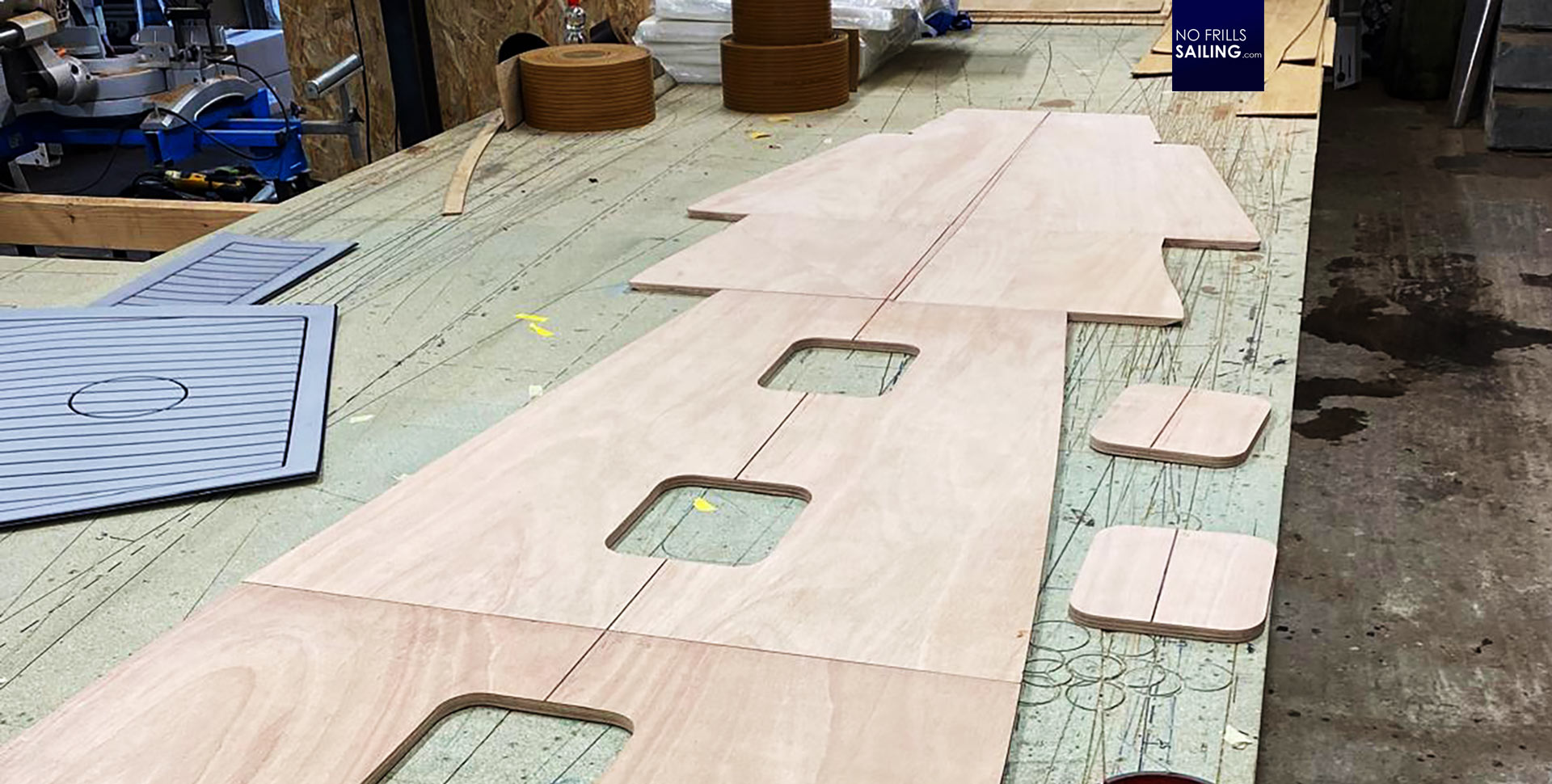
As much as the floorboards themselves are fitting with absolute precision, there are little faults here and there. One of the biggest challenge for Christian Schmueth, the deck-specialist who made the EVA-foam decking for me, was to align the floorboards in such a way that the “caulking” of the deck-design would be absolutely in line and precise. This is really hard to achieve, I know it because I tried and failed myself when adding EVA-foam to my last boat. You can clearly see in the picture above that there is a pretty apparent offset of the center line and that the small access hatches to bilge and keel bolts are offset for a few centimeters.
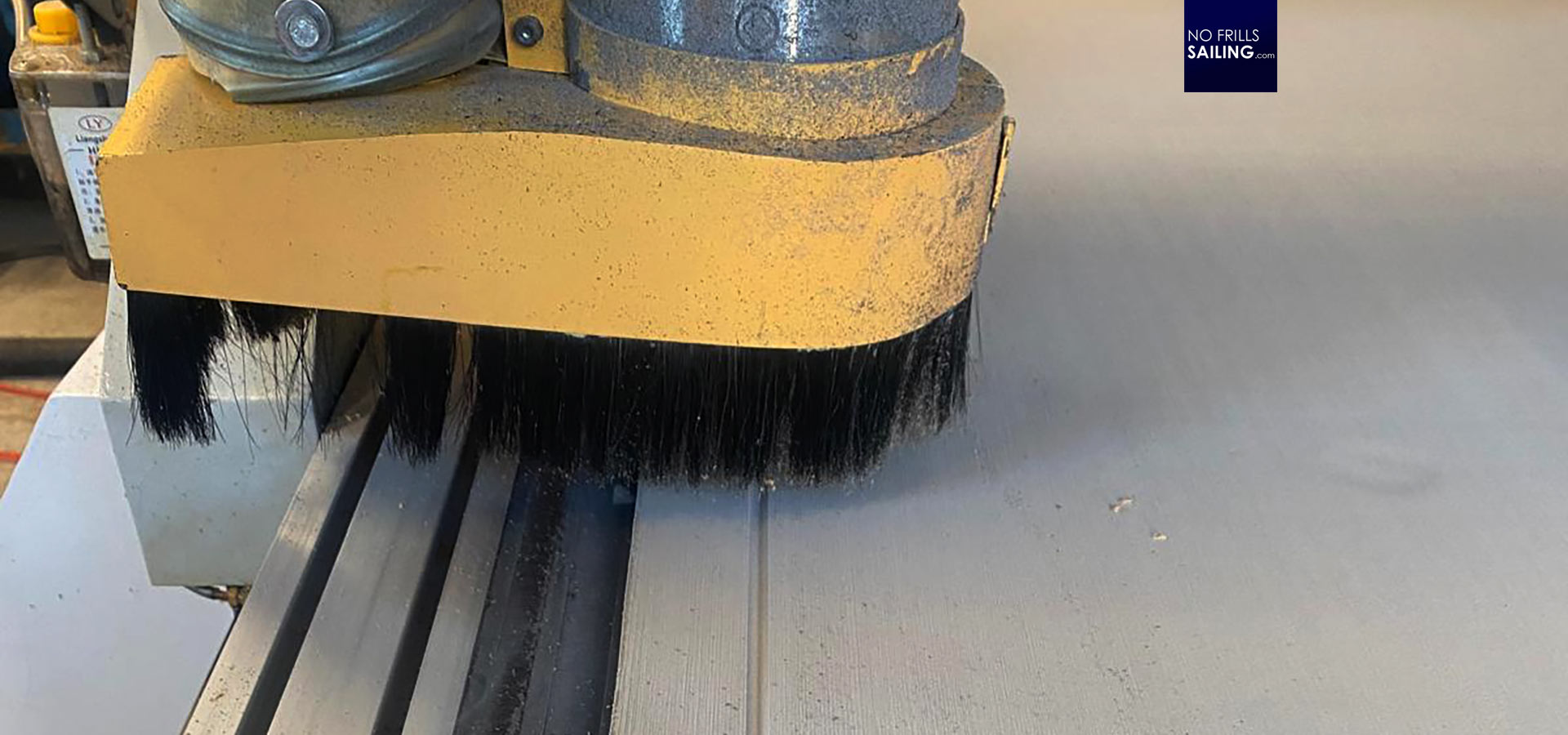
Why bothering? Because the EVA-deck material is cut by a precision CNC-cutter. So there is the possibility to add absolute accuracy and precision to these pieces. Besides, being down below the boat I don´t want to look at awry caulking lines which break the harmony of the nice interior. Of course do I want the floorboards (as everything else) as center-aligned and beautiful as possible. Christian told me that he had to spend literal hours in trying to figure out how to offset the offset. We will see in the end if he succeeded …
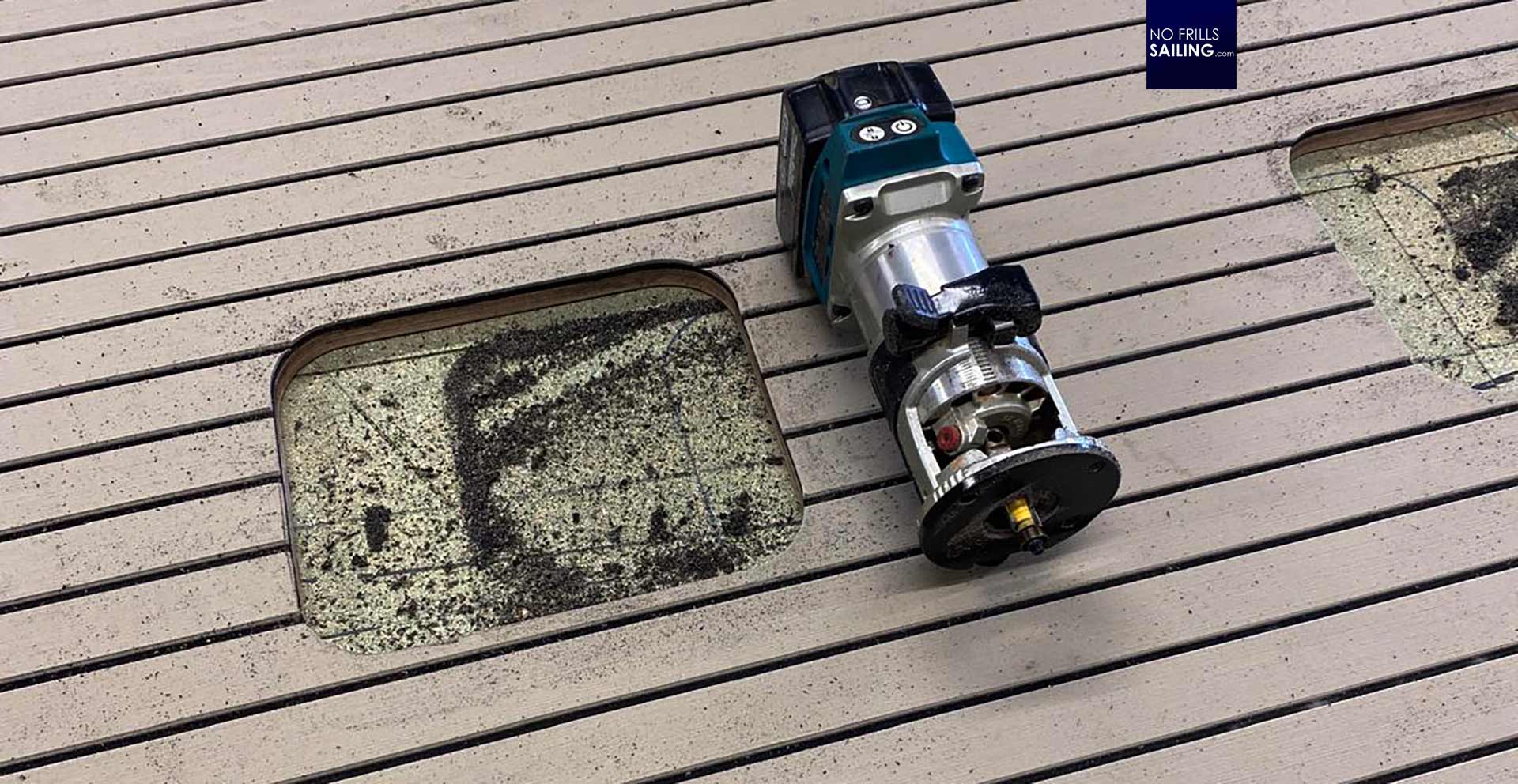
Where the cutting process is done by a computer, the rest is handcrafted. The raw EVA-foam material comes with a self-adhesive pre-applied glue. So basically, the foam can be put onto the wooden floorboards like a huge sticker. Again, just one little millimeter offset can ruin the whole impression of the deck afterwards. When applying, you want to make sure that the surface of the wood is prepared: Dust-free, even, clean and ready to welcome the glue. Finishing work after application (of course by avoiding bubbles) are also done by hand. For a 42-footer like my Omega 42 with those individual eight floorboards, it took Christian around three full working days to complete the task. Collecting the boars, I was amazed. Nice work, mate!
Pros and cons of EVA-foam
Why EVA-foam? I have very, very good experience with that material, when it comes to have a nice flooring for down below. First of all, it´s in the word itself: It is a “foam”. Which means, that walking on that material, especially barefoot, is a very nice sensation. It is warm, absolutely not slippery and due to the material properties, kind of sound absorbing and even to a certain degree heat-insulating, which will be a thing during the colder months of the year.
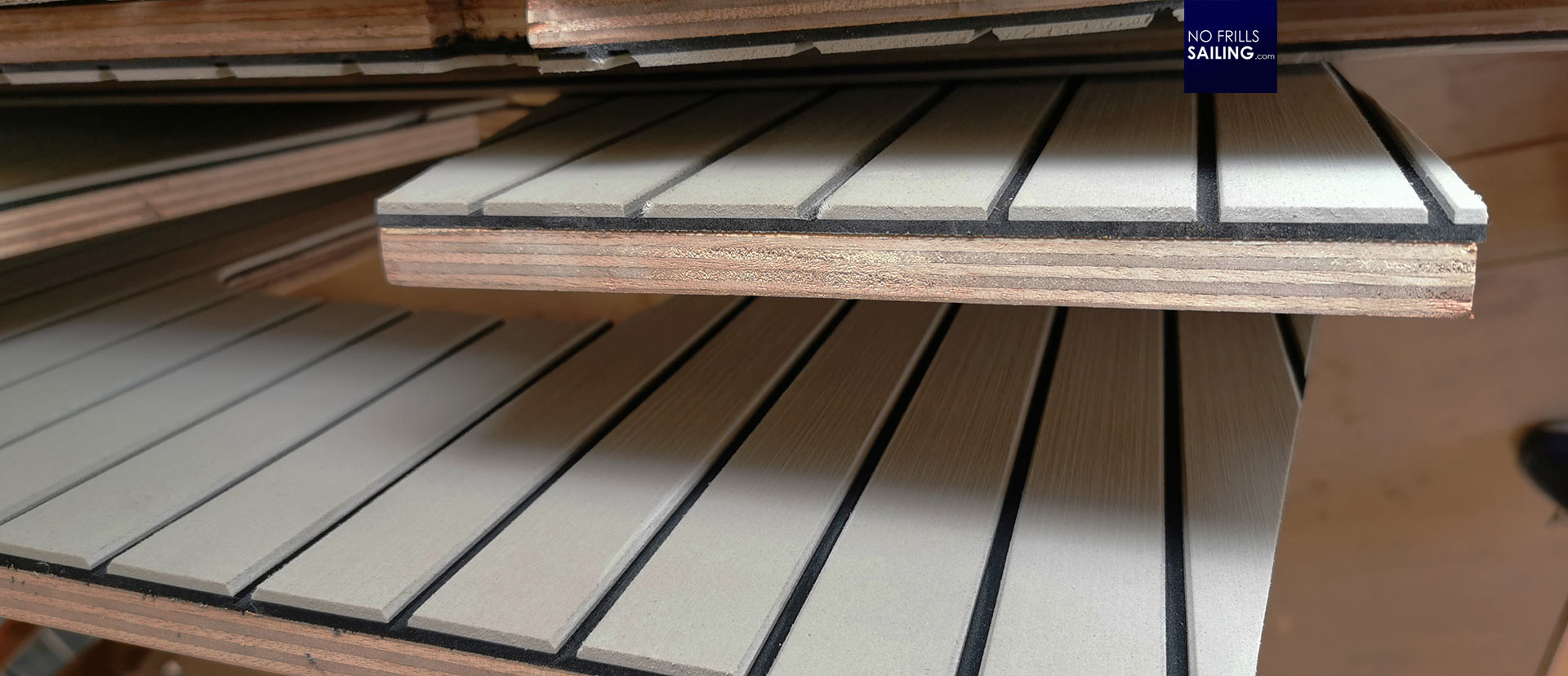
EVA-foam is also very easy to clean. I´ve discovered that ordinary dishwashing detergent will clean it right away (with water of course) without harming the chemical properties or rubbing off the colorization. Scratches may be blow-dried away easily. And even if a part is severely damaged, one can easily replace it with a small patch, as it can be cut out with a sharp carpet knife. The only downside I see is the external use. For constantly being exposed to saltwater, dry and wet conditions, heavy UV-rays and such I personally find it too nimble. As I wrote earlier, I will use a different material for the outside deck of my boat.
Fitting the floorboards in my new boat
Arriving at the shipyard, I cannot wait to put in the floorboards to check how they fit and most importantly, how they look like. Putting them inside starting at the bow berths working my way back to the galley, it´s like doing a big puzzle. All the work and effort of Christian paid off so nicely: The caulking (those fake black seams running along from tip to toe) is aligned beautifully – well done, my friend!
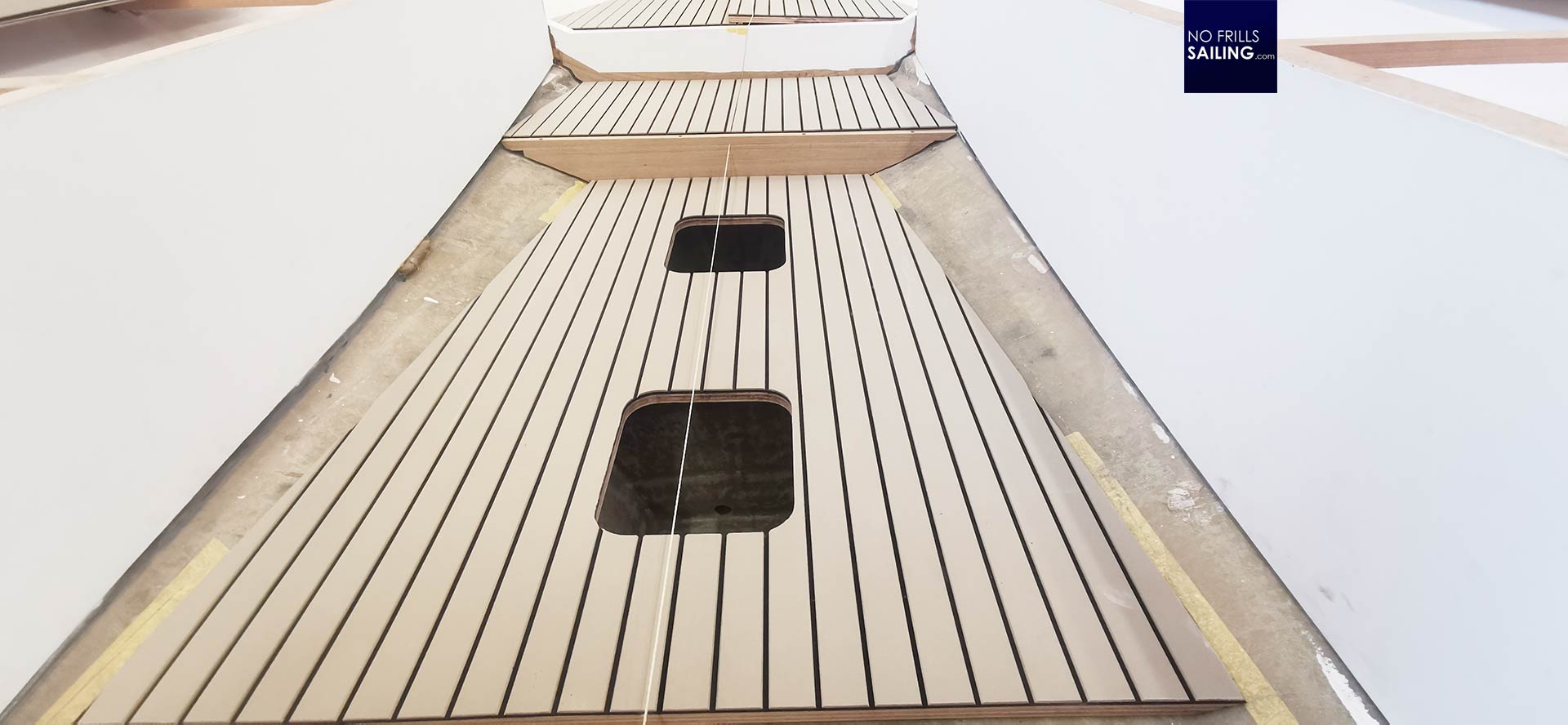
I wasn´t so sure about the color choice though. There are so many colors to choose from. In GEKKO I went for an all-black floor with white caulking. Very modernistic and nice, it really matched the complete whiteness of the boat´s interior and the orange cushions. For the Omega 42 it´s a bit different, as she is a classic icon of sailing and although I want her interior appearance to be modern, I also want to pay my respect and tribute to the classiness of the boat. Teak, black and white and dark brown was out, as well as all-white (beware of any stains!), so I went for “sand”. Do you like it?
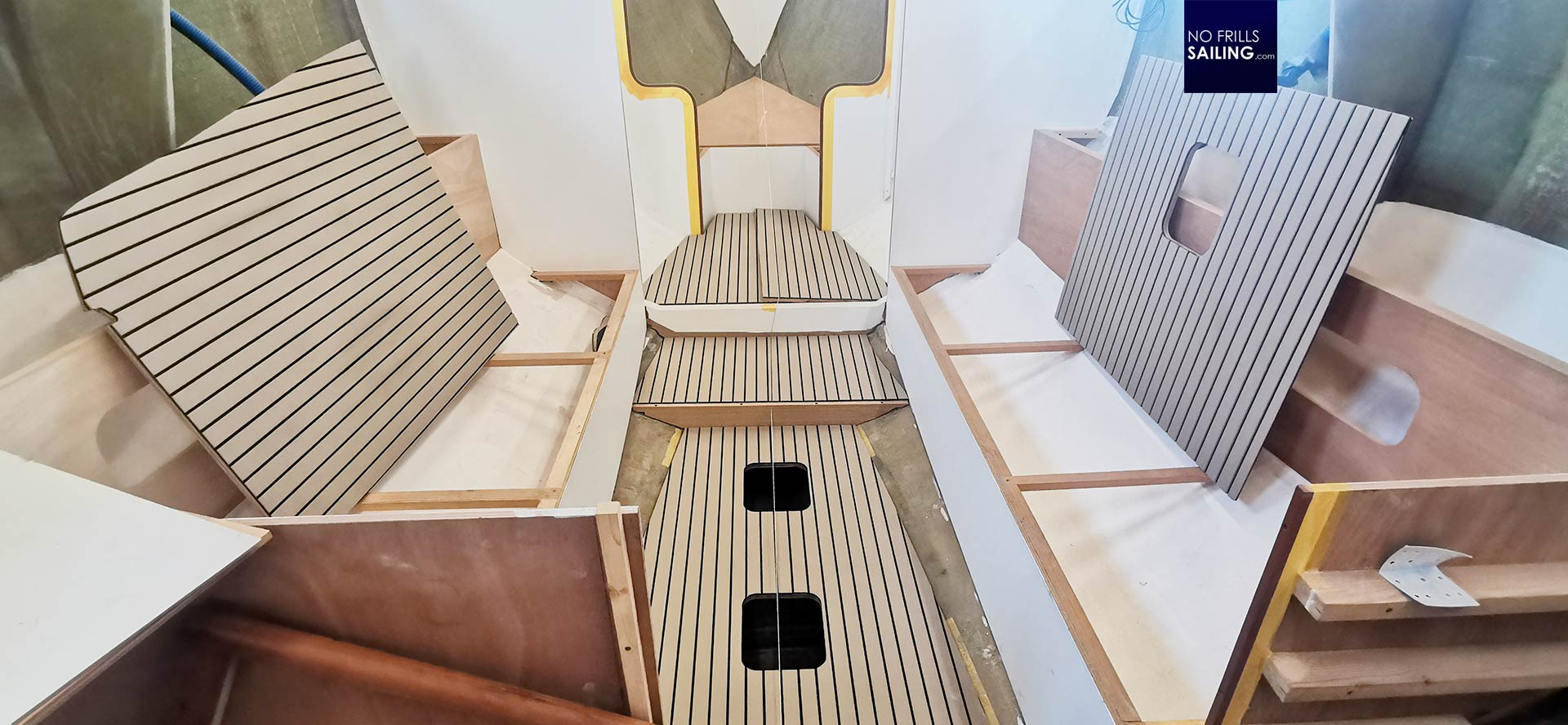
Seeing half of the boat fitted with the new floorboards, I must say I really like it. The “sand” color conveys a warm feeling and is not all-too aggressive. Also, it matches the white of the lacquered bulkheads and furniture and will match the Bamboo-made surfaces of the worktops in galley, the mini chart table and the saloon table. Yet it is still kind of low-key for the really deciding elements, which will be the cushions of the boat. But these are still miles away from the stuff thet comes next.
Next steps in the Omega 42 build
So what will happen? The coming weeks will be very exciting for ALPHA. In the stern section the guys are preparing the Diesel-engine base for fitting, something I look forward too. Together with fitting the engine, I will do a documentation of how a fuel-tank is custom made. Likewise, the freshwater system will be installed and electronics. In this, another final meeting with Gotthardt´s Garmin specialist is scheduled to define the electronics for the yacht. Simultaneously, furniture works in galley, nav-station and saloon go on, resulting in the first big highlight event, the marriage between deck and hull in a few weeks.
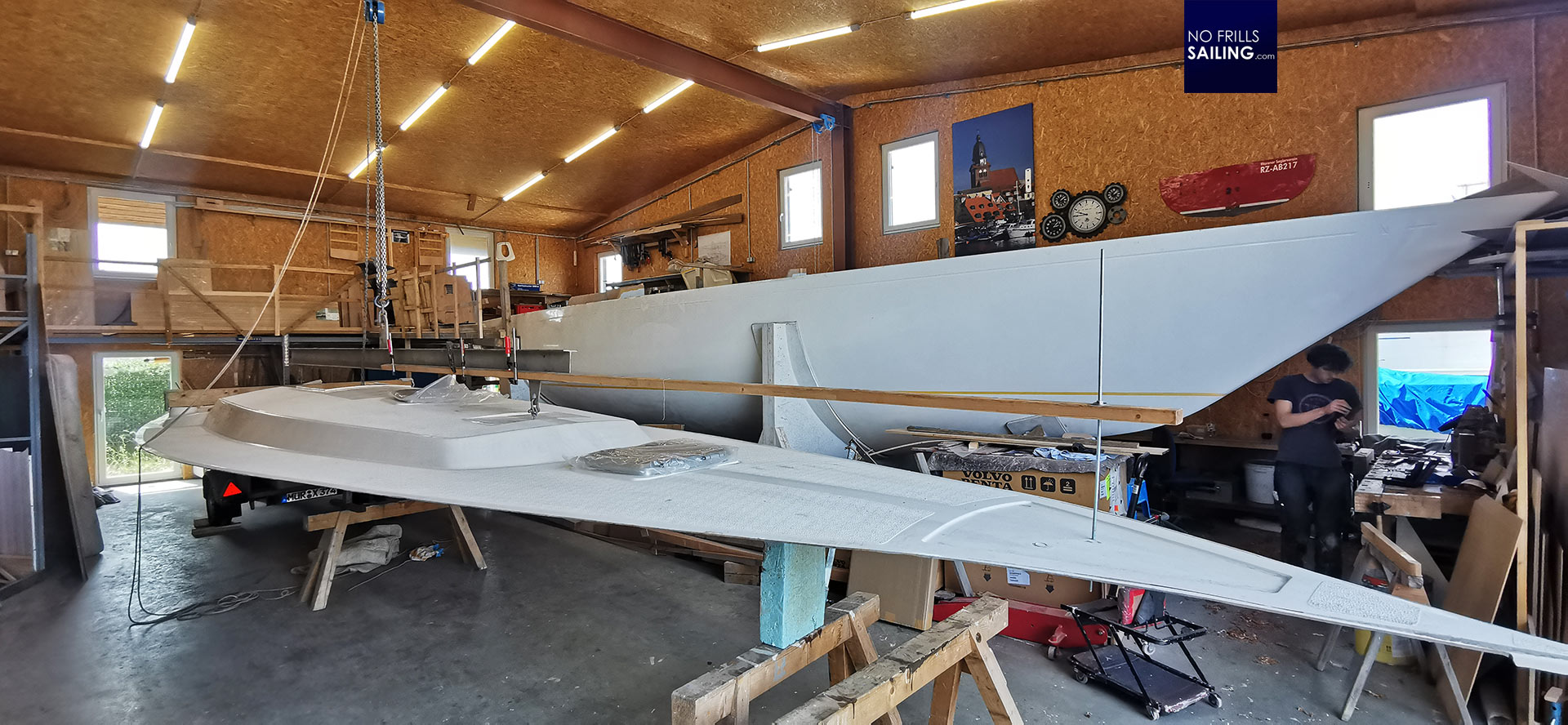
At the same time production of the 3.5 ton lead keel will ramp up. Another aspect of this yacht-build that is highly interesting. In the coming weeks I will transport the 1:1 keel-gauge model to the foundry – looking so much forward to seeing the keel being cast! In any case, we are a bit closer to the boat being finished, at least, we now have a deck to walk on.
You may also be interested in these related articles:
Interior yacht upgrade: EVA foam!
Precise digital measurements for a new yacht deck
